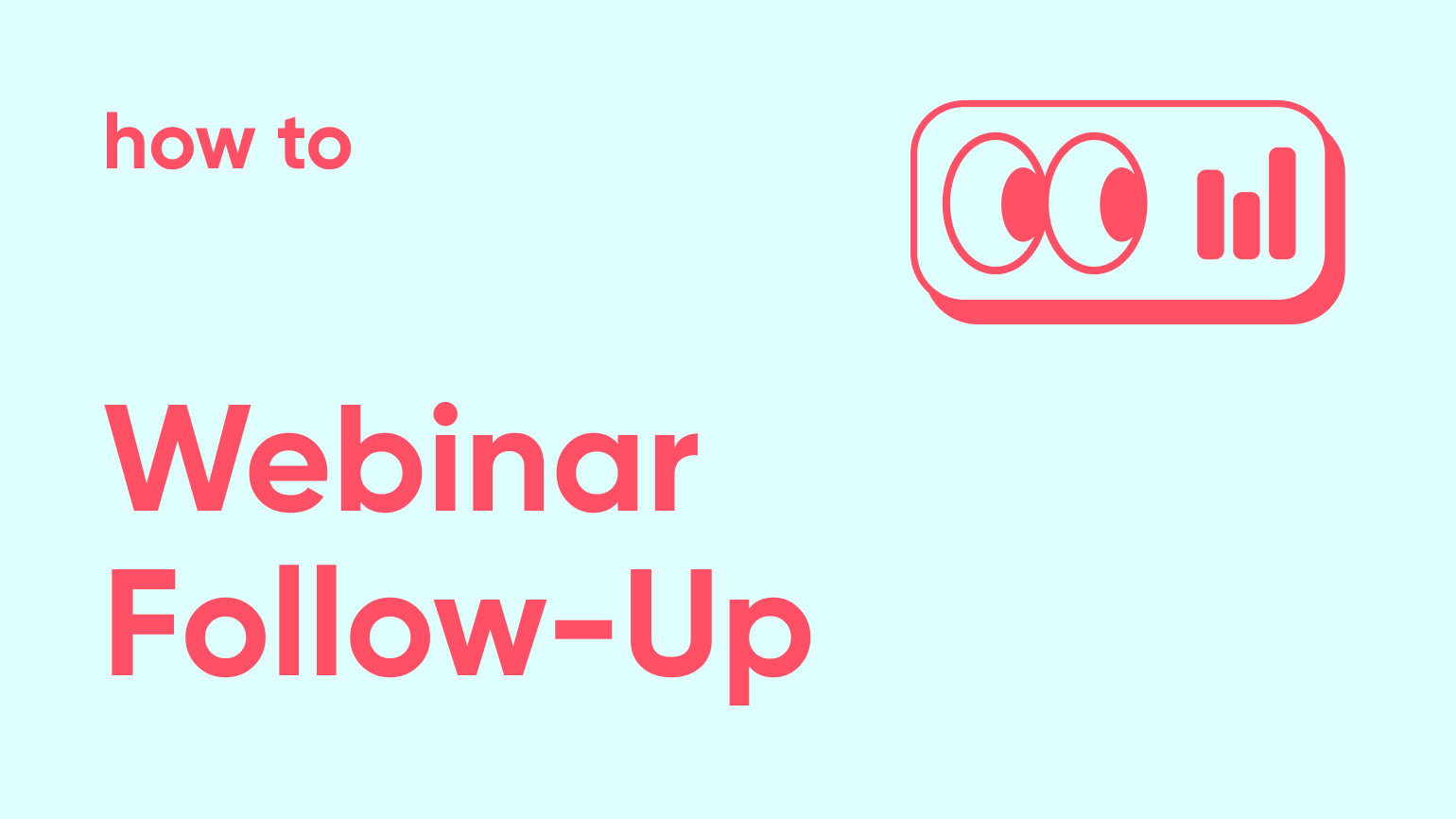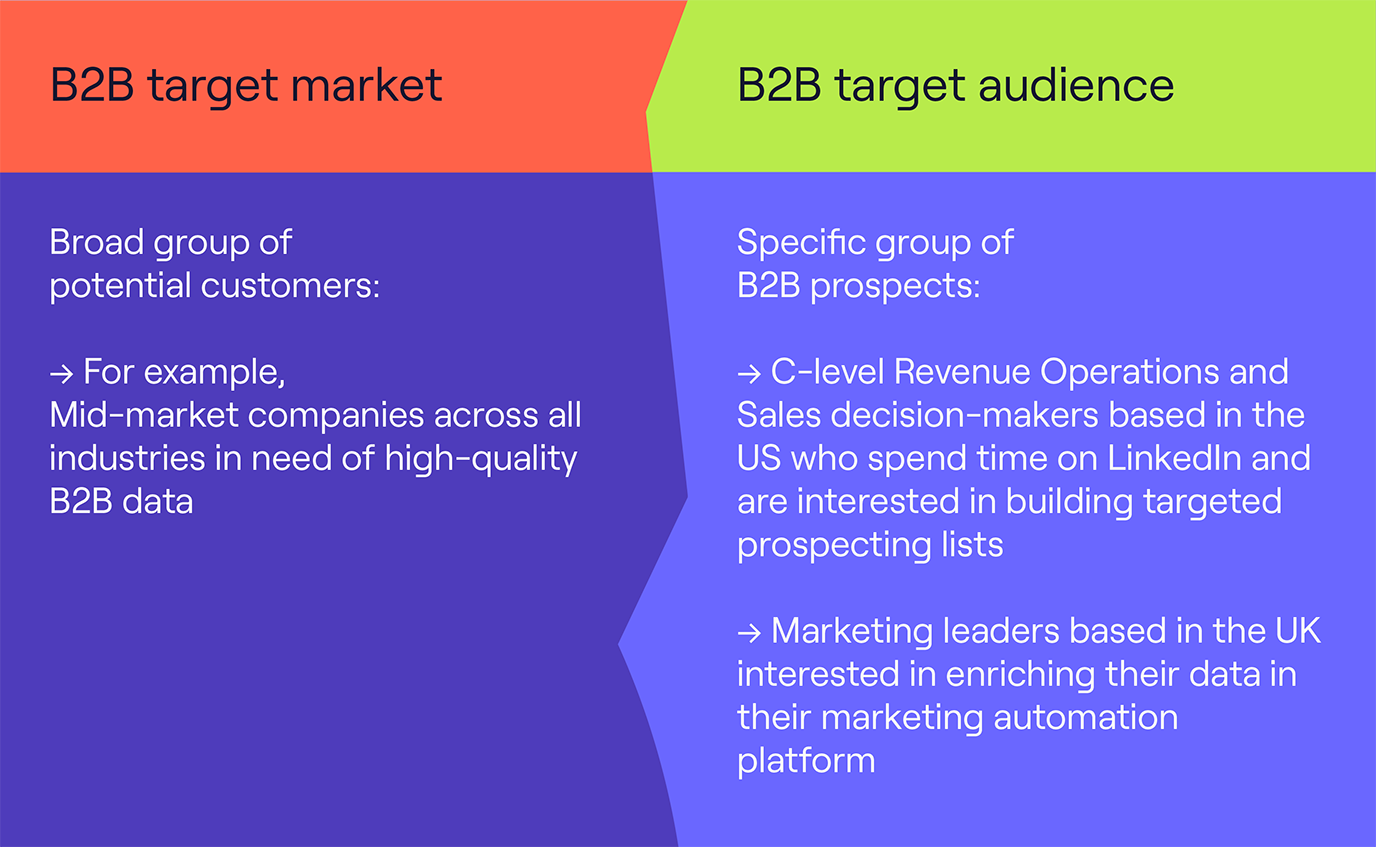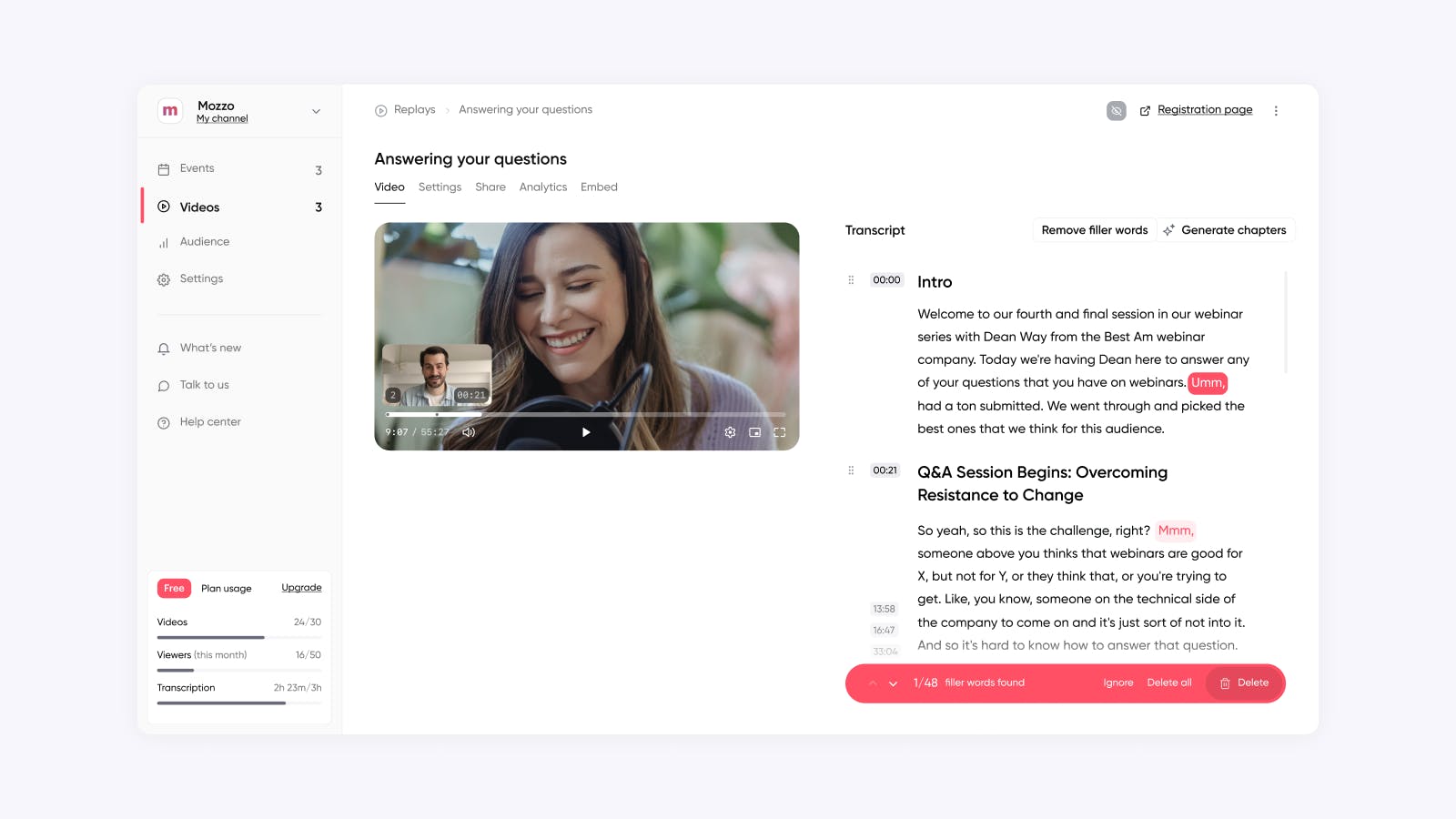Webinar Follow Up Emails: How to Maximise Webinar ROI

Throwing a stone into a pond and walking away won't make ripples that last. The same applies to webinars: a 'one and done' approach will likely see your efforts fade into obscurity, swallowed up by the vast sea of content available.
Hosting your webinar drew in crowds like a hot act at a music festival; but what if this swaying sea of people had something vying for their attention on the next stage over? Would they stay, would they wander away, or worse - forget your performance entirely?
Here, the unsung hero struts onto the stage - follow-up emails! Like a guitarist cementing a memorable riff or a drummer adding a catchy beat, they reinforce your message, highlight your USPs, and keep the thrill of your webinar alive, boosting your ROI beyond a simple one-time event. Welcome back to the stage, let's keep the afterparty going.
Crafting Effective Webinar Follow Up Emails: A Step by Step Guide
- Learn how to integrate follow up emails into your webinar email sequence
- Unearth the distinctive character of your audience for tailored engagements
- Sprinkle personalized elements in your follow-up emails for enhanced connections.
- Opt for clear calls-to-action in your emails to boost engagement
Step 1: Understand Your Audience
Anything webinar-related always starts with understanding your audience.
Never overlook the significance of your audience's profile as you construct your follow-up emails. Since you can't engage an audience you don't know, initiate efforts to clearly understand your audience's needs and expectations. Their feedback and interactions from the webinar can be a goldmine of information.
Analyze their comments, questions or posted topics during the webinar, their details from the sign-up process, and their attendance rate to understand what triggers their interest.

Your total understanding of your audience enables you to channel your efforts effectively, ensuring that your communication adequately satisfies your audience's need for information, thereby maximizing engagement.
Step 2: Personalize Your Follow-Up Emails
Nothing breeds disconnection faster than generic content. In a world where customers are inundated with irrelevant emails every day, tailor your follow-up emails to match your audience's unique attachment points discovered in Step 1. Your emails' subject lines, greetings, content and offers must resonate with each recipient specifically.
To illustrate, address your recipients by their first names, reference the webinar title and topics or issues they individually raised during the webinar, or forward resources that align with their expressed needs.
With such personalized mails, you prove your careful consideration of each participant, fostering trust and encouraging future engagements.
Step 3: Include a Clear Call-to-Action
Last but definitely not least is the inclusion of a clear call-to-action (CTA) in your emails. A CTA is not a command; it is a guide that leads your reader to the desired action. With an effective CTA, you marshal your audience's engagement in the direction you want, strengthening your interaction with them.
For instance, you might encourage the audience to download materials from the webinar, sign up for your newsletter, or register for your next webinar. By explicitly stating what you want them to do next, you can feel more guided and less ambiguous, fostering better interaction.
Remember, your CTA's effectiveness leans heavily on its visibility, clarity, and relevance to the audience.


Your Next Webinar Ready in Under 2 Minutes
Start for free up to 30 registrants. No credit card needed.
Start for freeLeveraging Templates for Your Webinar Follow Up Emails
- Templates streamline your follow-up process
- Customized templates maintain brand consistency
- Templates ensure your message is effectively communicated
The Role of Templates in Streamlining Follow Up Emails
Templates set a standardized framework that helps send follow-up emails in a more efficient manner. This means less time creating fresh content, and more time analyzing the impacts and responses of your webinar attendees.
For instance, a well-defined template would consist of components like a gratitude section, a summary of the webinar topic, a call to action, and additional resources or links. By having a set structure, you are merely filling the blanks with the unique content, and avoiding the possibility of forgetting important elements.
The follow-up template can also include repurposed webinar elements such as a summary of the key takeaways, a short-form video, or other pieces of content that were made from the webinar.

Moreover, templates also ensure consistency in your messaging. Consistency keeps your brand identifiable and trustworthy, leading to better attendee engagement over time.
Customizing Templates to Fit Your Brand and Message
You shouldn't only focus on branding your webinar, but the whole experience around it.
Aligning templates to fit your brand and message not only makes your content resonate more with your audience but maintains a consistent brand image. Templates are not one-size-fits-all, and should be customized to reflect your company's voice, tone, and visual identity.
Firstly, customize the wording and language in your follow up email to reflect your brand's tone. Is your brand professional or more casual? Use words that reflect this in your email.
Secondly, consider the structure of your email. Some brands may prefer a brief, straightforward style while others lean towards thorough, detailed correspondence. The structure should be guided by what aligns with your brand.
Lastly, differentiate your emails with branded visuals. Try to avoid generic images, opt instead for ones that are closely tied to your company's visual branding. Integrate your color scheme and use your brand's typography in headers and call to actions.

Customizing your follow up emails not just maximizes their impacts but also solidifies your brand in the minds of your webinar attendees.
Understanding the Timing of Webinar Follow-Up Emails
- You'll learn why the timing of follow-up emails matters a lot.
- You'll get tips to decide the perfect timing for sending follow-up emails.
The Crux of Timing in Webinar Follow-Up Emails
After mastering the art of using templates for webinar follow-up emails, it's necessary to demystify the timing aspect. Sending emails at the right time plays an integral role in maximizing the response. If you're too early, your email might get lost among the sea of other emails. If you're too late, the prospect might have moved on and your email ends up getting ignored. It's a delicate balance, and perfecting it is crucial.
The timing of your follow-up emails comes down to two components: what time of day you send them out and how long after the webinar you send them. In an ocean of emails, standing out is vital, and the best way to achieve that is to slide into the recipient's inbox when it's less cluttered.
When's the best time and day to host a webinar?
Tips to Nail the Timing of Webinar Follow-Up Emails
Determining the best time to send out your follow-up emails isn't as tricky as it sounds. Here are some tips:
Keeping it Timely: The first follow-up should be sent within 24 hours of your webinar. This keeps the content fresh in the prospect's mind. It's the best time to capitalize on the momentum created by the webinar - while your brand and the value you provide are still on top of the attendees' minds.
Segmenting the Audience: Timing can also depend on the audience segmentation. For example, attendees who stayed for the whole webinar might receive a follow-up email sooner than the ones who dropped off early.
Analyzing Past Data: Look back at your previous email campaigns and webinar analytics and find out when you received the highest open and click rates. Use this data to dictate your follow-up email schedule. Cosmetic adjustments can make or break the effectiveness of your email campaigns.
By diligently observing and tweaking your timings based on your data, you can achieve a higher ROI with your follow-up emails after webinars.
Remember: It’s not a matter of “set and forget”, but rather a continuous process of data-driven refinements. After garnering a grounded understanding about when to send follow-up emails, it’s time to move on to the next significant pointer.
The Role of Webinar Follow Up Emails in Sales and Marketing
- Follow up emails are key in converting webinar engagement into sales.
- Successful email strategies have boosted business results.
- Immerse yourself in the potential of follow-up communications.
The Strategic Potential of Follow-up Emails in Sales and Marketing
Follow up emails often represent a missed opportunity in many organizations' webinar strategies. Yet, these post-event communications can be key in converting the high quality webinar leads. It's all about capitalising on the engagement your event managed to generate.
Think about it this way. You've successfully caught your target market's attention and offered them valuable insights during your webinar. It's now time to extend that conversation beyond the online session. As a sales or marketing professional, this can be the start of an engaging and potentially profitable dialogue with your potential clients or business partners.
Case Studies: Turning Webinar Engagement into Success
It's one thing to discuss the potential of follow-up emails, quite another to witness their impact firsthand. For an understanding of how these messages can drive sales and marketing success, let's explore a few examples.
Creme de la Creme, for instance, had a robust webinar strategy in place but noticed a post-event slump in conversion rates. They decided to enhance their follow-up communications, infusing them with customised content, clear call-to-actions, and post-webinar survey to measure attendee behaviour during the webinar. The changes did not disappoint. Conversion rates spiked significantly, with many more attendees responding to the email and signing up to their community.
Then there's the case of Elevo. Despite limited resources, they managed to leverage their webinars effectively using targeted follow-up emails with additional documents. By segmenting their audience and crafting personalized emails, they were not only able to maintain communication with attendees but also transform a proportion of these connects into trial users for their software product.
These examples serve to underline the critical role that webinar follow-up emails play. They can supplement marketing efforts and feed into the webinar funnel, ultimately enhancing the ROI derived from your webinar. The key is to view them not as a one-off post event gesture, but as an essential part of your overall webinar strategy, designed to sustain engagement, strengthen relationships, and drive conversions.
These companies both use Contrast and its extensive data & integrations to run their follow-up email strategy.
All of this sheds light on the extensive capabilities of webinar follow up emails and their role in effective marketing strategies. However, striking the right note with these can be a tightrope walk, and it's important to sidestep common pitfalls.


Your Next Webinar Ready in Under 2 Minutes
Start for free up to 30 registrants. No credit card needed.
Start for freeCommon Mistakes to Avoid in Webinar Follow Up Emails
TL;DR
- The effectiveness of webinar follow up emails can be compromised by common errors.
- Knowing these mistakes in detail allows for strategic planning to avoid them.
- By avoiding these errors, you amplify the ROI of your webinar marketing.
Ineffective Subject Lines
A webinar follow-up email, like a webinar invitation email, is as good as its subject line. Subject lines that are vague, too long, or not personalized generate minimal engagement. A non-descriptive subject line can steer your recipient towards deleting the email before they’ve even read it. Be concise, relevant and, if possible, personalize the subject line to capture attention.
Absence of a Clear Call to Action
An ineffective CTA or the absence of one altogether is another common error. Your recipient shouldn’t be left guessing what their next step should be. Whether you want them to register for your next webinar, view a recording of the past one, or purchase a product, the CTA should be clear, compelling, and easy to locate within the email.
Failure to Personalize the Email Content
Broad, generic follow-up emails rarely resonate with recipients. Your email should speak directly to the recipient, referencing the specifics of the webinar they attended providing a personalized touch that can greatly enhance engagement. With modern CRM systems, this degree of personalization is more achievable than ever.
Neglecting the Importance of Timing
Poorly timed follow-up emails can drastically dampen their effectiveness. Follow up emails should be sent while the webinar is still fresh in the minds of the attendees. However, timing also includes avoiding hours when your recipients are least likely to check their emails. This requires a deep understanding of your audience's behaviors and time zone considerations.
Neglecting Follow-up Email Analysis
Finally, failing to derive insights from the metrics of your follow-up emails is a common mistake that can handicap your marketing efforts. Using the analytical tools at your disposal, study the open rates, click-through rates, and the overall engagement of your follow-up emails. This will illuminate what’s working and what isn’t, allowing you to optimize future webinar follow-up emails.
Each of these common pitfalls is avoidable with careful planning and execution. By maximizing the effectiveness of your webinar follow-up emails, you can dramatically increase the ROI of your webinar programme.
The Future of Webinar Follow Up Emails
- Emerging trends are transforming the email follow-up landscape.
- Learn how these trends might reshape future webinar follow-ups.
Unfolding Trends in Webinar Follow Up Emails
Webinar follow up emails have emerged as constructive business tools for engagement and nurturing leads. They're not static, but continue to evolve, spurred on by the rapid advancement in technology and changing consumer behaviours. Some of the growing trends include personalization, rich media incorporation, interactivity, and automation.
Personalization has become indispensable in email marketing. It's not just about addressing the recipient by their name, but tailoring the content based on their interactions and preferences. In the future of webinar follow-ups, expect an even higher level of personalization and segmentation. Personalizing your emails can demonstrate your recognition and understanding of each recipient's unique interests, thus enhancing engagement rates.
On another front, the incorporation of rich media like videos, GIFs, and infographics in follow up emails is becoming increasingly popular. In fact, one could argue that rich media is making emails more fun, human, more engaging, and more effective. Their usage is anticipated to grow even more in the future. This could revolutionize how businesses present webinars, creating a more immersive experience for recipients.
The Anticipated Impact of these Trends on Webinar Follow Up Emails
These emerging trends are poised to change the future of webinar follow up emails drastically. High-level personalization could transform them from generic, transactional emails to tailored messages that focus on individual customer preferences. This could significantly heighten recipient engagement and webinar ROI.
Additionally, the integration of rich media in emails could largely transform how businesses communicate post-webinar details. Embedding quick video summaries or infographics could make email content more engaging and easily digestible. It’s conceivable that these innovative approaches could enhance recipient interaction, thereby leading to stronger customer relationships and increased conversions.
Further, the rising trend of email automation will speed up the process, relieving marketers of manually crafting individual follow ups. It promises greater efficiencies, allowing businesses to interact with their potential leads promptly. This time-sensitivity could markedly increase the probability of converting a lead into a customer.
In essence, the future of webinar follow up emails is promising, driven by continuous innovations that aim to improve the engagement and conversion ratios. The embrace of these advancements can make these emails more dynamic, personalized, and visually appealing. Consequently, businesses investing in understanding and adopting these trends could gain a significant edge in their webinar marketing.
Conclusion: Sealing the Deal
Your webinar's success doesn't end when the curtain comes down - it's just getting started. Captivating presentations and engaging Q&A sessions are step one, but the follow up emails fuel the actual ROI fire.
So why are these emails so crucial? They continue conversations, foster relationships, and above all, demonstrate your commitment to providing value beyond a standalone event. This isn't just strategy - it's ongoing conversation with potential customers.
Now, dust off that keyboard and draft your sequence. Send a thank-you note, provide additional resources, ask for feedback. Stir up engagement and keep it going. You've worked hard for those attendees, don't let them off the hook too soon.
Do you have your post-webinar email strategy in place? Or are we looking at another opportunity slipping through our fingers, lost in the sea of ignored follow-ups?
Remember, your webinar ROI is only as convincing as your follow-up game. Now, go conquer that inbox.


Your Next Webinar Ready in Under 2 Minutes
Start for free up to 30 registrants. No credit card needed.
Start for free